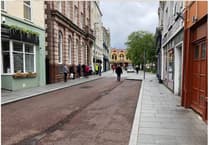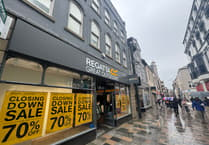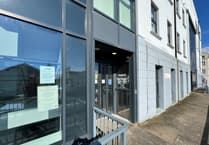Have you visited the Victory Cafe by the Bungalow station yet?
I’ve been a couple of times and it really is a great addition to the leisure offering not just for visitors. It is a very popular ‘go to’ venue for local residents too.
But how much do you know about the history of the building?
I have to admit I had no idea prior to it being Murray’s Motorcycle Museum. But fortunately I have a friend and neighbour John Johnson – who has a lifetime of experience in the building industry particularly with McCormick and Davies but also on his own account – who was able to help me.
He worked on the building in the early 1950s.
The work was described on the plans as Top Secret – Air Ministry!
During the Cold War, with all the Isle of Man Second World War radar stations unusable, a new Chain Home Extra Low station was proposed as part of the ROTOR project.
This was an elaborate air defence radar system built by the British Government in the early 1950s to counter possible attack by Soviet bombers.
The site chosen here was at Snaefell, which had originally been discarded in 1940 by Air Commodore Park as being too remote.
Park was delegated the job of siting the RAF radar stations on the island and the target date for completion was April 1956.
Here John takes up the story.
The job was awarded to McCormick and Davies to build the early warning station on the side of Snaefell and a small building on the top of the mountain.
But that was just the start of many problems that the builder had to overcome.
The biggest was the weather because, although the summer wasn’t too bad, the winter was nearly impossible.
The next problem was water.
Drinking water was brought up every day in milk kegs, on the back of a wagon with the men.
Water for the construction works was the next issue and after samples of peat water were taken they were found to be OK for concreting and brickwork.
So a brick tank was built to hold enough water for the building work to commence and drains were dug to channel the water to the tank.
A canteen was put up plus a drying shed for the men’s coats and a toilet.
Before the building work started a clerk of works arrived and an engineer who had an office at the rear of the old Bungalow which was a timber frame building covered with galvanised sheeting.
They were on site everyday during the construction.
The next problem was getting materials to the top of Snaefell to build a one room building for more communications equipment.
To do this a Manx Electric Railway tram was used to tow an open freight car to the Bungalow where a ramp was built alongside the track which enabled the wagons to tip into the freight car and transport to the top where the materials were off loaded by hand.
John had the job of driving a dumper to and fro from the hotel site to the building site. At that time he was an apprentice bricklayer!
When the buildings were finished they were never kitted out.
There was a generator house and a reservoir at the rear so that they would be self contained.
The only building that was probably used was the one on the top of Snaefell.
The other transport used during the works was a small diesel car which took the engineers to the top I’m almost certain that vehicle is still used as I recall being transported to the summit to look at works which were being undertaken while I was minister.
The workers were certainly tough in those conditions in the 1950s, thanks for that story John.
Murray’s Motorcycle Museum was first located in Santon on the site it now occupies after the family moved to ‘Santon Villa’ in 1953.
After about 10 years a larger location was required so it was moved to Christian Street in Peel where it stayed for five years.
It was then sited in the buildings adjacent to the Bungalow Station for 37 years until it relocated to its original premises and continues to be of interest.
After Murray’s relocated the buildings stood empty for 17 years, Vicky and Benn Quirk saw the potential of the site and set about securing the lease, carrying out a significant amount of work on the derelict building without water or electricity and backed by a solid 60-page business plan together with much blood, sweat and tears and the difficulties of establishing a business during a pandemic it was finally opened officially in May 2021 and has rapidly earned a much deserved reputation in its iconic position on the TT course in what was a Ministry of Defence radar station during the Cold War.




.JPG?width=209&height=140&crop=209:145,smart&quality=75)
Comments
This article has no comments yet. Be the first to leave a comment.